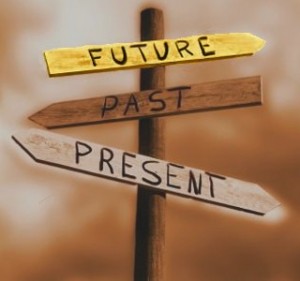By Rose O. Sherman, EdD, RN, FAAN
“He who cannot change the very fabric of his thought will never be able to change reality. Anwar Sadat
As we approach a new year 2015, it is a good time to talk about the need to stop our “mourning for the good old days.” Were the good old days really that good? Our past practices have led us to where we are today with costs out of control, access to care issues and questionable patient outcomes. To be effective, nurse leaders need to remain future focused and in the words of Dr. Tim Porter-O’Grady “surrender our attachments to the past.”
The chaos and complexity in today’s environment is challenging the sense of order for many nurses with long professional careers. When we feel fearful, it can be comforting to cling to what we know has worked in the past. A key skill for leaders is to work in the present with an eye toward the future. When you think about the past, it is good to reminisce but important to keep in mind the phrase that was then and this is now. Three key ways to stay future focused include the following:
1. Track the trends
Any major trends in our environment whether it be work, home or the world in general are almost always preceded by many signs large and small. In the mid-1960s there was a song recorded by the group Buffalo Springfield that began with the lyrics “There’s something happening here. What it is ain’t exactly clear” Many seasoned nurse faculty feel this sentiment. They feel challenged because teaching strategies which have served them well in their careers are not working with our newest generation of learners – the Net Generation. Their observations about differences in how today’s students read and think are being validated by scholars who study the impact of technology on learning. The attitudes, expectations, and learning styles of Net Generation students are different than previous generations and reflect the environment in which they were raised. Yet if you had really been paying attention to all the trends in the environment such as the explosive growth of technology and the internet, much of this would not have been surprising.
2. Look for opportunities to reinvent
Peter Drucker is quoted as saying “the best way to predict the future is to create it.” This is great advice when you think about it. If it is clear that things are changing and innovation is needed – why not be the one to invent it. Just because you have done things a certain way does not mean it is the best way to do it today. When you are passive in the process of change, it is easy to feel like a victim of what is happening. You will be much more willing to embrace something that you have an active role in creating.
3. Talk to younger nurses
Investing in the relationships with younger members of your team will help your understanding of today’s environment. The pace of change in our health-care delivery system does not seem to frustrate our younger nurses. Many of them have commented that in their short careers, they have adapted to the pace, complexity and changing environment. They are full of hope and can give you great hope for the future. As a wise CNO recently told me, “with all of our challenges, we need technologically savvy nurses who can think quickly on their feet and are creative and flexible….in my mind the future of nursing is made for the Generation Y nurse. A greater challenge is for those of us more seasoned nurses who want to hold on to tradition…..I believe in these new age nurse leaders. “
A metaphor that I frequently think about when looking at our attachments to the past is that of a ship. When a ship has left the dock, you are either on board or you are not. The ship is not heading back to that port to pick you up. Surrendering our attachments to the past is a choice but an important one. Whenever you find yourself talking about the good old days of nursing, reflect on what is to be gained by the conversation and whether anyone is in fact listening. The future does belong to those who create it.
© emergingrnleader.com 2014



 LinkedIn
LinkedIn Instagram
Instagram